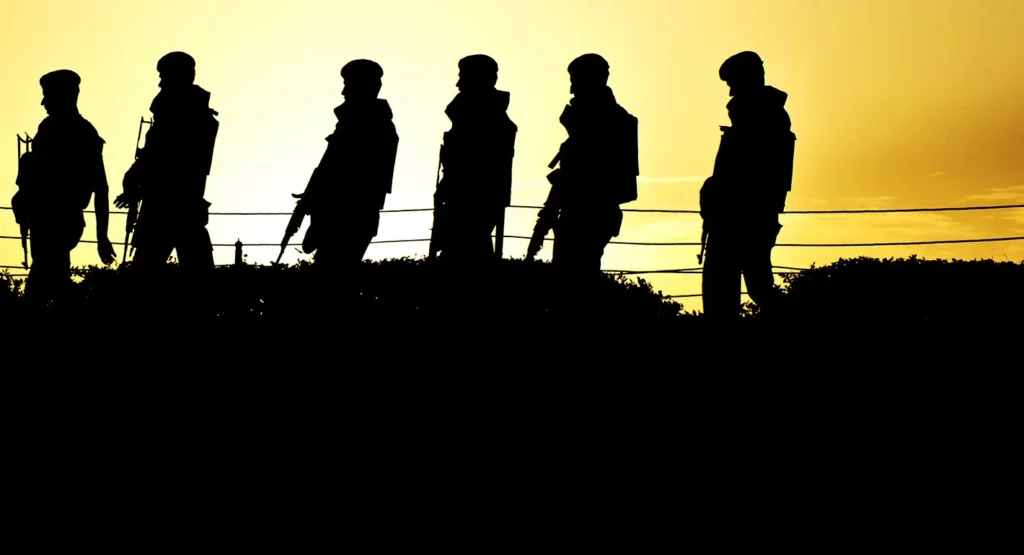The security landscape along the Afghanistan-Pakistan (Af-Pak) border has undergone a radical transformation since the US withdrawal in August 2021. Pakistan now faces a complex and destabilizing dual Asymmetric Threat matrix, resulting from the ideological convergence of some militant groups and the violent fragmentation of others. The persistent spike in militant attacks since 2022, reaching the highest levels in 2023 since 2017, underscores the urgency of addressing this structural vulnerability.
This security crisis is defined by two fundamentally distinct axes of violence. The first is the irredentist challenge posed by the Tehrik-i-Taliban Pakistan (TTP), which benefits from operational sanctuary provided by the Afghan Taliban’s formidable Haqqani Network (HQN). The second, and arguably more globally potent, challenge is the so called Salafi-Jihadist Islamic State of Khorasan Province (ISKP), which acts as a ruthless spoiler against both the Pakistani state and its primary adversary, the Afghan Taliban regime. Managing this dual Asymmetric Threat necessitates entirely divergent counter-terrorism doctrines, leading to significant strategic overstretch.
The TTP-Haqqani Nexus and the Border Asymmetric Threat
The TTP, led by Emir Noor Wali Mehsud since 2018, is a Deobandi school of thought terror organization whose primary objective is the overthrow of the Pakistani state and the implementation of its version of Sharia law within Pakistan. Under Mehsud’s command, the group executed a critical strategic pivot, consciously shifting its target profile almost exclusively toward security and law enforcement personnel, thereby seeking to rehabilitate its public image and leverage Pashtun ethno-nationalist sentiments against state institutions
The TTP’s resurgence is inextricably tied to the sanctuary provided by the Afghan Taliban (IEA). The TTP publicly renewed its Bay’ah (pledge of allegiance) to Taliban Supreme Leader Hibatullah Akhunzada following the 2021 takeover. Central to this facilitation is the Haqqani Network, a UN-designated terrorist entity whose leader, Sirajuddin Haqqani, holds the crucial dual role of Taliban Deputy Leader and Interior Minister. This institutional power within the IEA allows the HQN to ensure the TTP’s continued operation and logistics, confirming that Pakistan’s security challenge is not merely a counter-terrorism issue but an Asymmetric Threat rooted in geopolitical and ideological alignments.
Operational data confirms this escalating crisis. The TTP, often using Afghan territory as a base, has engaged in high-intensity kinetic actions, including a March 2024 attack involving a truck bomb that killed five Pakistani soldiers. Later in the year, militants attempted to storm an cadet college in Wana, Khyber Pakhtunkhwa, a high-impact, symbolic attack designed to project power and undermine public confidence.
ISKP and the Global Asymmetric Threat
In stark contrast to the TTP’s Pakistan-focused irredentism, the Islamic State–Khorasan Province (ISKP) is a terror group driven by global ambition to establish a transnational caliphate. This ideology places ISKP in violent opposition to the Afghan Taliban, whom ISKP denounces as “Kandahari” ethno-nationalists who have abandoned so called ISKP’s global jihad for international legitimacy. This internal conflict within the millitants sphere is an Asymmetric Threat that consumes Taliban resources, offering Pakistan an implicit, yet highly risky, strategic benefit.
The group, led by Sanaullah Ghafari (Shahab al-Muhajir), has demonstrated a superior external operations capability, confirming its status as the most concerning transnational Asymmetric Threat originating from the region. Major kinetic actions in 2024 confirming this projection include the devastating March 2024 Crocus City Hall attack in Russia, deadly bombings in Iran, and disrupted plots targeting Europe.
Within Pakistan, ISKP focuses on high-casualty sectarian violence and attacks against political infrastructure, expanding its operational base across the Durand Line into Balochistan. This shift was confirmed by the group’s claim of responsibility for the devastating July 2023 suicide bombing on a political rally in Bajaur.
The Asymmetric Threat Dilemma
The convergence of the TTP’s border insurgency and ISKP’s sophisticated urban terrorism compels Pakistan to fight an internal Asymmetric Threat while simultaneously managing a transnational one. In response, Islamabad launched Operation Azm-e-Istehkam (Resolve for Stability) in June 2024. However, the efficacy of this new operation is hindered by a lack of political cohesion, particularly with the provincial government of Khyber Pakhtunkhwa, which risks compromising the crucial socio-economic components designed to deny militant groups local recruitment bases.
Ultimately, mitigating this persistent Asymmetric Threat requires a two-pronged strategy: kinetic action and rigorous border defense against the TTP, coupled with sophisticated, intelligence-led operations to dismantle ISKP’s autonomous, globally connected cells. The inability to compel the Afghan Taliban to definitively act against the TTP means Pakistan remains strategically vulnerable to a state-enabled Asymmetric Threat on its western front.



